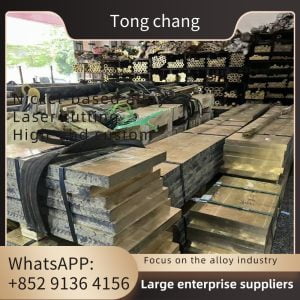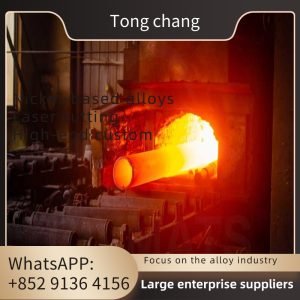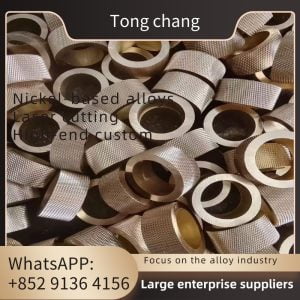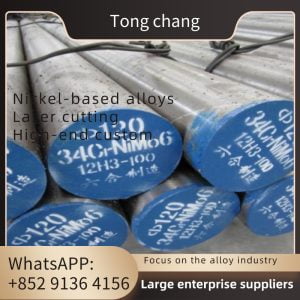| Product Name: | 180 Degree Elbow | Type: | Butt Weld |
|---|---|---|---|
| Schedule: | SCH20, SCH30, SCH40, STD, SCH80, XS, SCH60, SCH80, SCH120, SCH140, SCH160, XXS | Size: | 1/8’NB TO 48’NB IN |
| Applications: | Cellophane Manufacturing, Chlorination Systems, Pesticide Production, Incineration Scrubber Systems, Etc. | Packaging: | PLY-WOODEN CASE OR PALLET |
ASTM B366 HASTELLOY C22 ELBOW 180 DEGREE BW NICKEL ALLOY FITTING
TONG CHUANG Group supply steel pipe, fitting, flange more than 32 years, and products already export more than 50 countries up to now, TONG CHUANG brand already won good reputation in the world market . And our production widely use in Petrochemical , offshore , Subsea, Ship building, Boiler, Heat Exchange, Cooling, heating system, water transfer, …
What is Hastelloy C22?
Hastelloy C22 is a versatile austenitic nickel-chromium-molybdenum-tungsten alloy with enhanced resistance to pitting, crevice corrosion and stress corrosion cracking. The high chromium content provides good resistance to oxidizing media while the molybdenum and tungsten content give good resistance to reducing media. This nickel steel alloy also has excellent resistance to oxidizing aqueous media including wet chlorine and mixtures containing nitric acid or oxidizing acids with chlorine ions. Other corrosives Hastelloy C-22 has resistance to are oxidizing acid chlorides, wet chlorine, formic and acetic acids, ferric and cupric chlorides, sea water, brine and many mixed or contaminated chemical solutions, both organic and inorganic.
This nickel alloy also offers optimum resistance to environments where reducing and oxidizing conditions are encountered in process streams. This is beneficial in multi- purpose plants where such “upset” conditions occur frequently. This nickel alloy resists the formation of grain-boundary precipitates in the weld heat-affected zone, thus making it suitable for most chemical process applications in the as-welded condition. Hastelloy C22 can't be used in service temperatures above 1250° F due to the formation of detrimental phases which form above this temperature.
Characteristics of Hastelloy C22:
- Resistant to pitting, crevice corrosion and stress corrosion cracking
- Outstanding resistance to both reducing and oxidizing media
- Excellent resistance to oxidizing aqueous media
- Exceptional resistance to a wide variety of chemical process environments including strong oxidizers such as ferric acids, acetic anhydride, and seawater and brine solutions
- Resists the formation of grain-boundary precipitates in the weld heat-affected zone
- Excellent weldability
Chemical Composition
Grade | C | Mn | Si | S | Co | Ni | Cr | Fe | Mo | P |
C22 | 0.010 max | 0.50 max | 0.08 max | 0.02 max | 2.50 max | 50.015 min* | 20.00 – 22.50 | 2.00 – 6.00 | 12.50 – 14.50 | 0.02 max |
Mechanical Properties
Element | Density | Melting Point | Tensile Strength | Yield Strength (0.2%Offset) | Elongation |
Hastelloy C22 | 8.69 g/cm3 | 1399 °C (2550 °F) | Psi – 1,00,000 , MPa – 690 | Psi – 45000 , MPa – 310 | 45 % |
Equivalent Grade
STANDARD | WERKSTOFF NR. | UNS | JIS | GOST | EN | OR |
Hastelloy C22 | 2.4602 | N06022 | NW 6022 | – | NiCr21Mo14W | – |
Surface Treatment Options
BPE Surface Finish Code
| CSI Surface Finish Code
| Product Contact Surface (Max Ra)*
| Product Contact Surface Finish Treatment (ID)
| Non-Product Contact Surface (Max Ra)
| Non-Product Contact Surface Finish Treatment (OD)
| Dimensions & Tolerances (BPE) or (CSI)
|
|---|---|---|---|---|---|---|
SF1 | PL | 20 µ-inch (0.51 µm) | Mechanical Polish/As Drawn | 32 µ-inch (0.81 µm) | Mechanical Polish | BPE |
SF5 | PO | 20 µ-inch (0.51 µm) | Electropolished | 32 µ-inch (0.81 µm) | Mechanical Polish | BPE |
SF6 | P25 | 25 µ-inch (0.64 µm) | Electropolished | 32 µ-inch (0.81 µm) | Mechanical Polish | BPE |
N/A | PU | Mill Finish | Unpolished/Mill | Mill Finish | Unpolished/Mill | CSI |
Applications:
- Pharmaceutical industries use alloy C-22 fittings and tubing to avoid contamination caused by corrosion related failures
- Cellophane manufacturing
- Chlorination systems
- Pesticide production
- Incineration scrubber systems
- Chemical process industry in equipment like flue gas scrubbers, chlorination systems, sulfur dioxide scrubbers, pulp and paper bleach plants, pickling systems, and nuclear fuel reprocessing
- Waste water processing







